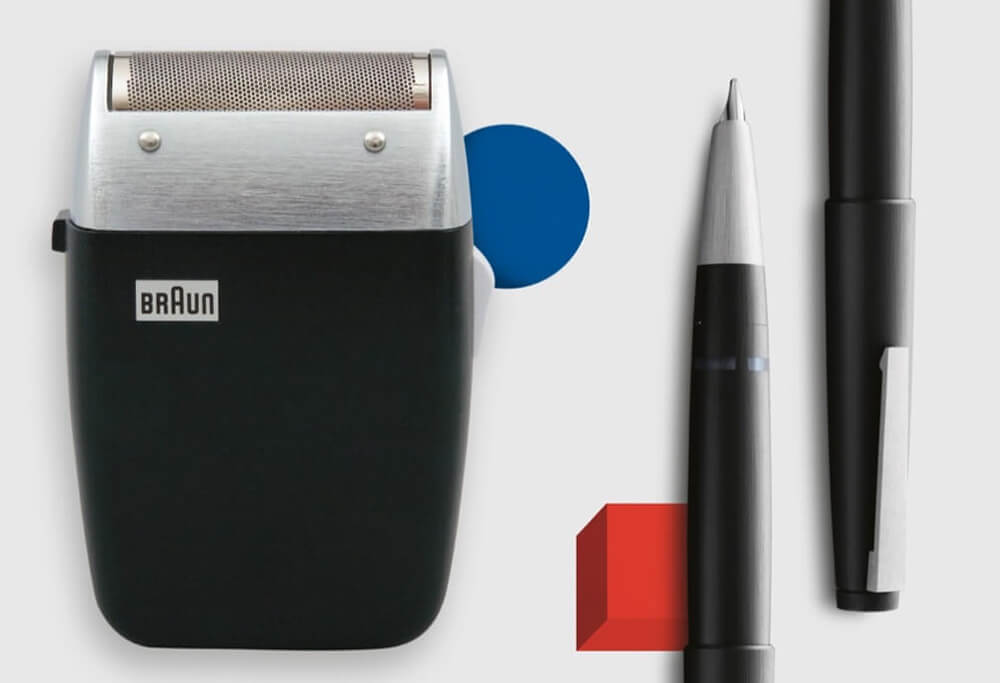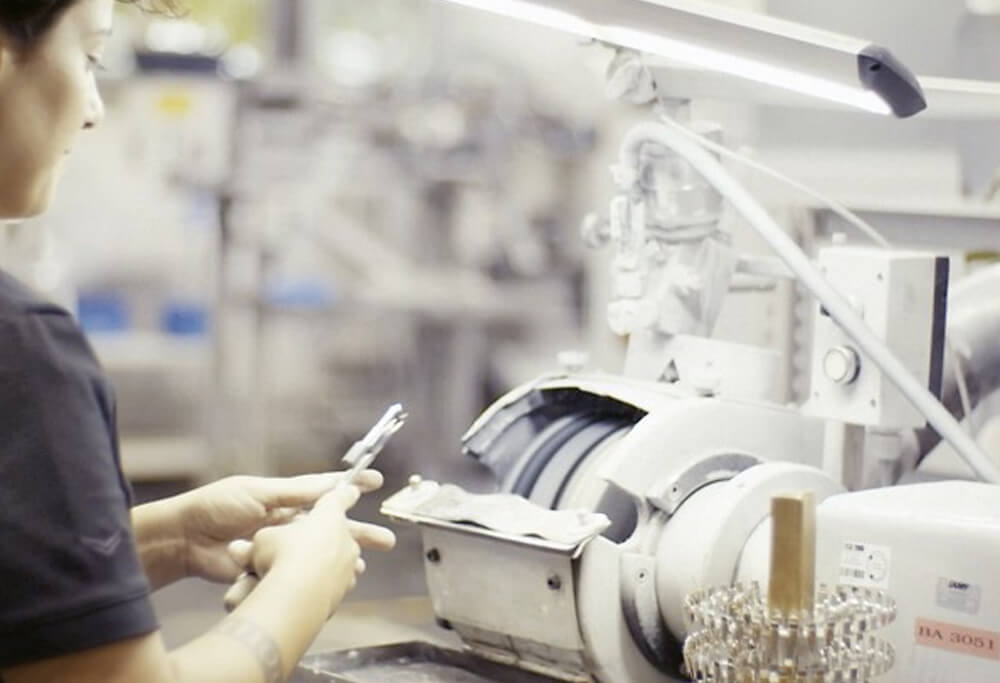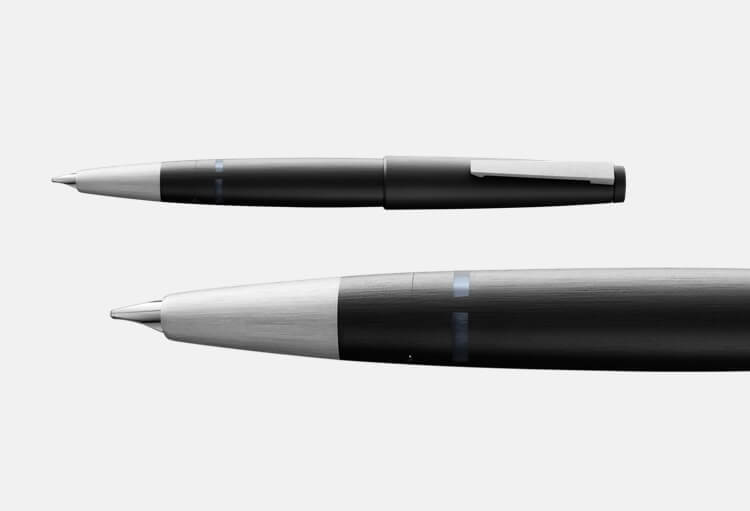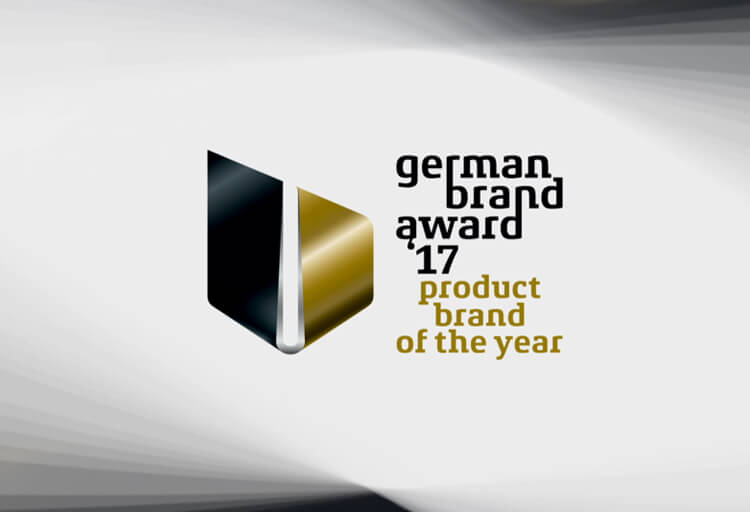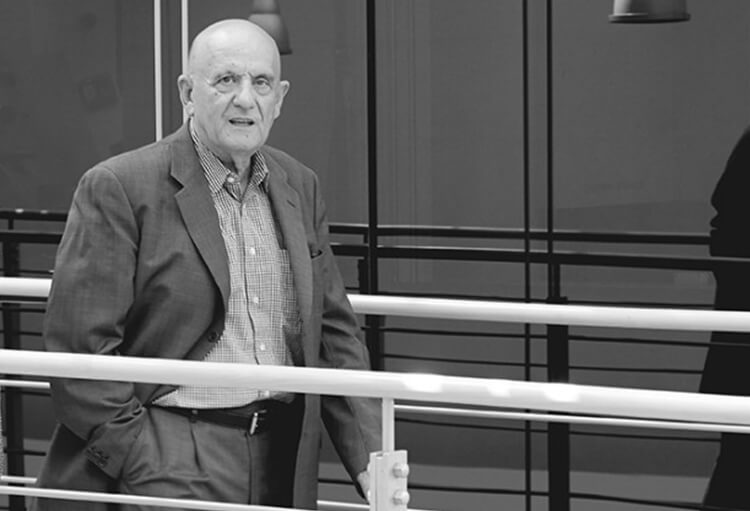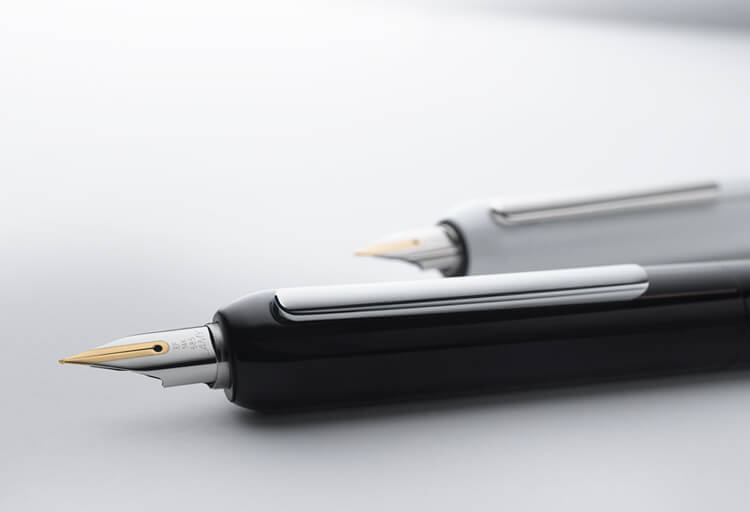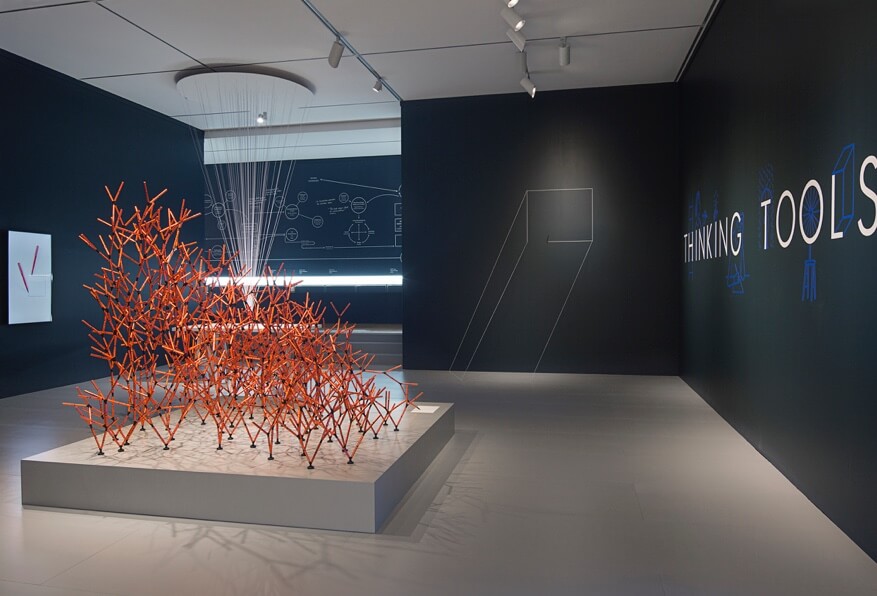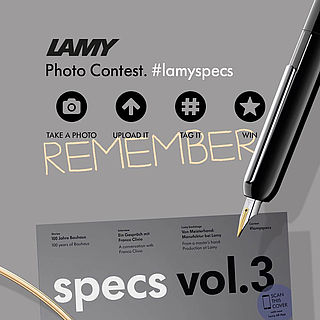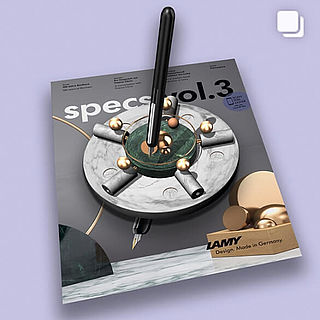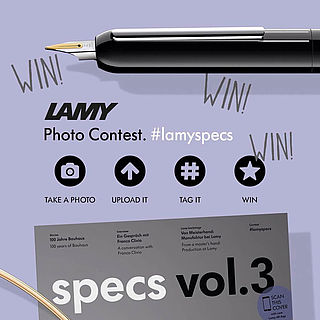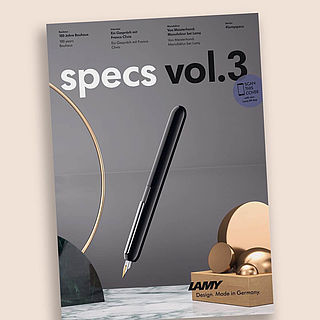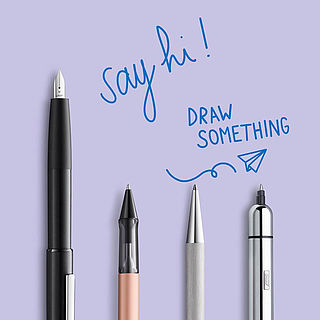A conversation with Franco Clivio
The product designer Franco Clivio has his own way of drawing nearer to the objects which he designs. It starts with taking a closer look. And understanding how something really functions.

Writing instruments are tools and therefore should be functional.
Franco Clivio, you have been working with Lamy for many years. In 2001 you designed the LAMY pico, in 2009 the LAMY dialog 3. Both writing instruments are technically complex, but uncomplicated to use.
Let’s take the LAMY pico. How did you come up with the idea of designing a ballpoint pen for the pocket?
FC: At that time Dr. Manfred Lamy said to me: “Clivio, do what you want – but please don’t make a fountain pen.” Then designing a pen for sketching sprang to mind and I asked myself: How do I actually use writing instruments? They all have some sort of clip for putting them in a jacket or a shirt. But the problem is actually: I just put my pens in my pocket. And then the same thing always happens: They get stuck and annoy me. If I put them in the side pocket of my jacket and want to take them out, I end up pulling the lining out as well. When I realised that, I thought about reducing the pen to a minimum.
Were there precedents?
FC: Yes, I discovered one at a flea market. A small closed pen was lying there. As I looked at it, I noticed that when I pull here, a part comes out at the front, the pen extends. There were many such pens around 1900, 1910. This pen from the flea market suddenly came to mind, even though I had completely forgottenabout it and had it lying in a box somewhere at home. I then recommended just such a pen, which was a big surprise when I presented the concept. Everyone was dumbfounded. Nobody at Lamy had thought of anything like that.
So the LAMY pico needs neither a cap nor a clip, because the technology is completely integrated into the pen?
FC: It needs neither. I simply press on the pico and can start to write immediately. It was an enormous challenge for the engineers. With the first prototypes you had to pick up the pen and pull; afterwards you had to push it back together. When I saw that I said: “If it isn’t possible any other way, we’ll have to forget about the product, because then the joke would be lost.” In the end they managed to make it so that the pico can be operated with one hand.
From the idea to the product – the flea market find at the top provided the inspiration for Clivio to create the LAMY pico.
A bird is aesthetically perfect, because it has to be able to fly.
What is your attitude towards aesthetics?
It always depends: With a pacemaker, I always want it to work well. Maybe there will soon be a pacemakermade by Gucci, but I won’t buy it. I want one from Siemens, because the Gucci one will also have the Siemens technology in it. Joking aside, there are things which are incredibly aesthetic. One can see that the functionality has been optimally exploited. Think of a sports boat for Olympic games or a bow for shooting, take a javelin – it is incredible what aesthetics they possess. That leads us to biology, to nature. A bird is aesthetically perfect, because it has to be able to fly.
Does functionality alone make a product beautiful?
No, it is my interpretation that a product like the pico looks like it does. Another designer would have designed it differently. For me the ‘aha reaction’ was particularly important – and that is thanks to the function. Do you know why the plastic bushing which becomes visible at the top end when you open the pen is not smooth? If you look closely, it has a meandering pattern.
For better guidance?
No, it doesn’t need guidance. The designer’s experience comes into play: if the bushing were smooth, dirt would gather at that point – and over time the bushing would become scratched because of the constant extraction and retraction. The fluting prevents that. And in order for the bushing to reflect, the meanders are matt at the top and polished in the depth. Only a company like Lamy can do something like that.
Have you always enjoyed precision solutions?
Yes. I have never designed furniture in my life. If furnituredesigners had their way, they would have to dispose of their entire household goods twice a year, because they have to make new chairs. That never appealed to me, I did not want to make fashionable products, but functional ones.
You own a wonderful collection of anonymously designed objects. Do you get inspiration from these?
A designer’s most important organ is his eyes. When I see something, I immediately have to determine if it contains intelligent solutions, if there is something which fascinates me. Take an umbrella,a fantastic object, which has existed for thousands of years. When closed it is small, when I need it, it becomes large – and it always works according to the same principle. These are facts which a designer cannot ignore. You learn that if you know the story and see how everything fits together.
Take an umbrella,a fantastic object, which has existed for thousands of years.
Franco Clivio explains the workings of the twist-action fountain pen LAMY dialog 3.
And suddenly Lamy is there – and is the most beautiful task that I have ever had in my life.
Did you learn that during your studies at the Ulm School of Design?
In Ulm they were always posing practical questions, things were analysed and studied. We even dismantled objects into their individual parts in order to find out if there wasn’t one part too many. That still applies today: the most important part is imagined before I make a design. My mind is then set in such a way that I suddenly view things differently, see them in greater detail. And suddenly Lamy is there – and is the most beautiful task that I have ever had in my life.
Did your collection of anonymous designs also help when you designed the LAMY dialog 3?
Not as much. In 1967 I was working in Milan – with Tomás Maldonado at Rinascente. When I arrived in Milan, we went into a stationer’s around the corner and I bought a fountain pen – which I still have –, one where you press at the back and the nib comes out at the front.
Did Lamy give you free rein as with the LAMY pico?
No, this time there was a very clear task. Dr. Manfred Lamy said: “Clivio, I would like a capless fountain pen with a retractable nib.” That resulted in the dialog 3, the world’s first capless fountain pen, which also retracts the clip.
Who invented the fountain pen? Was it an engineer?
Was the cooperation with the Lamy engineers also as close with the LAMY dialog 3 as it was with the LAMY pico?
I love working with, and work very well with the engineers. And so, for example, if I remember correctly, it was my suggestion to use a spherical clasp for the dialog 3. It simply closes better than a flap. Designing the dialog 3 was a wonderful task. In principle it was a completely successful redesign for me. You can’t always be the first. Who invented the fountain pen? Was it an engineer? Was it a technician? Was it a businessman? It was an insurance salesman from New York.
A functional and design success – the spherical cap of the LAMY dialog 3
What type of pen do you prefer to use for working?
I have quite a spectrum. When Mr. Lamy came to me I took out a chest into which I had thrown writing instruments which I had found somewhere or other. Later it was bandied about that Clivio has buckets full of writing instruments. You can always discover something in such collections. An example: Sometimes I use a fountain pen from 1920, it is almost 100 years old now.
Later it was bandied about that Clivio has buckets full of writing instruments.
So you enjoy writing with a fountain pen? Do you also draw with one?
Yes, I draw. I don’t work with a computer, it is easier for me. I am still from another generation. If I had to design a chair, I would need a sheet of paper which is the same size as the chair. Once the drawing is finished, I take the paper and pin it to the wall – and then I see the chair.
How did your collection evolve?
I have always been a collector. When I moved to Zurich in 1980 I entered into an El Dorado, because in Switzerland there were the so-called ‘Brockenhäuser’, second-hand shops. And one of these municipal Brockenhäuser was near to the school at which I worked. While my colleagues went for a coffee in the break, I went to the Brockenhaus.
Collecting for you means more than discovering and owning.
Yes. It is a part of my job. As is common in design schools, I have, for example, said to the students: “So, now for a voluntary task. There are no marks and I only want those people involved who are interested and will see it through.” I then gave those who stayed a task: they were to purchase an object which cost two Francs – maximum. Or which they found somewhere. Then they were to explain what they found great about it, how it worked, why it was made and so on. For me as a teacher the challenge was: I had to bring something better. For me it was vision training.
The interview was carried out by Thomas Wagner.



